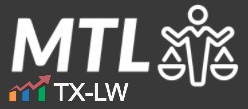You own a depreciated asset or an asset that has gone down in value. It happens. But say you cannot take advantage of the tax loss for some reason. Maybe it is because you don’t have other Income triggering a tax that year or maybe there is a limitation on the use of the loss for you. The question is then whether you can transfer your loss to another party who might benefit from it. The answer is often, “maybe.”
As the Second Circuit’s recent decision in Pimlico, LLC v. Commissioner, No. 23-7759 (2d Cir. Aug. 11, 2025), the ability to shift tax losses to a third party depends on the economic substance of the transaction. The IRS and the courts have developed timing rules and a multi-factor analysis to determine whether the investor can benefit from the tax loss.
Because business transactions are complex and variable, these same rules can seemingly change the tax outcome for transactions that were not tax motivated. They can put taxpayers in the position of having the IRS second guess their transactions. This is often the case when the transaction happens to provide a tax benefit for the third party. The Pimlico case provides an opportunity to consider this.
Contents
Facts & Procedural History
A Brazilian company held $22.7 million in distressed accounts receivable that had little economic value. The company contributed these receivables through a series of LLC transfers. They ultimately ended up in a partnership. On the same day the final partnership formed, a U.S. investor purchased an interest in the partnership for $300,164.
Within months, the Brazilian company requested a partial withdrawal from the partnership structure for exactly $300,164–the exact same amount the U.S. investor had contributed. The bank records showed the investor’s money coming in and an identical amount going out to the Brazilian company. The partnership then sold the receivables to another party and the partnership claimed the $22.7 million loss deduction. This caused the U.S. investor to have a large part of the tax loss.
The IRS challenged this arrangement during a tax audit, arguing the transaction constituted a disguised sale rather than legitimate partnership contributions and distributions. The dispute ended up in tax litigation when the taxpayers challenged the IRS determination. The U.S. Tax Court agreed with the IRS that this was a disguised sale, and the Second Circuit was asked to review the tax court decision.
The Basic Framework of Partnership Contributions
To understand the disguised sale rules in this context, we have to go back and consider the partnership contribution rules.
Section 721 of the tax code provides that partners generally don’t recognize gain or loss when contributing property to a partnership in exchange for partnership interests. This is the general rule for contributions.
Section 731 extends this non-recognition treatment to partnership distributions. The general rule under Section 731(a) is that partners don’t recognize gain or loss when receiving distributions from a partnership. This non-recognition treatment applies whether the distribution is cash or property. The theory is that partners are just receiving back their share of what the partnership owns – they’re not really engaging in a separate transaction that should trigger tax.
There are important exceptions to this general rule. Under Section 731(a)(1), a partner must recognize gain when cash distributions exceed their basis in the partnership interest. Loss recognition is even more limited under Section 731(a)(2) as partners can only recognize a loss when the partnership completely liquidates their interest and they receive only cash, unrealized receivables, or inventory items, and even then only if these distributions are less than their partnership basis. We don’t need to address these rules for our purposes as we are only focusing on the disguised sale aspects and not the manner of getting the tax benefit of the transaction if it is not a sale.
For the disguised sale part of it, these non-recognition rules make sense for genuine business combinations. When multiple parties contribute assets to operate a business together, they’re not really disposing of their property–they’re exchanging direct ownership for partnership interests that represent continued economic participation. The partners still bear the economic risks and rewards, just in a different form.
But this favorable treatment assumes the transaction represents a true partnership arrangement. When property moves into a partnership and cash quickly moves out to the contributing partner, the economic substance might be quite different from the form. The contributing partner may have effectively sold the property while using partnership formalities to avoid immediate tax consequences or to transfer tax attributes to another party.
Disguised Sale Rules Override Partnership Tax Rules
This is where the disgused sale rules come into play. They can override the partnership tax rules.
Section 707(a)(2)(B) authorizes regulations to recharacterize certain partnership contributions and distributions as disguised sales. The provision recognizes that taxpayers might use partnership formalities to achieve results that economically resemble sales while claiming non-recognition treatment. Rather than providing detailed statutory rules, Congress delegated to Treasury the task of distinguishing legitimate partnership transactions from disguised sales.
The resulting regulations adopt a substance-over-form approach. Even when parties follow partnership formalities perfectly – proper documentation, legal entity formation, technical compliance with partnership tax rules–the transaction may still be treated as a sale if that’s what it economically resembles. This is intended to prevent taxpayers from using partnerships as vehicles to accomplish what are essentially purchase and sale transactions while avoiding the tax consequences of sales.
Treasury Regulation Section 1.707-3(b)(1) sets out two requirements for disguised sale treatment. First, the transfer of money or other consideration would not have been made “but for” the transfer of property. Second, when transfers aren’t simultaneous, the subsequent transfer do not depend on the entrepreneurial risks of partnership operations.
The “but for” rule considers whether the cash distribution represents payment for property or a genuine partnership distribution. Would the partnership have distributed cash to that partner anyway, perhaps based on profit allocations or business needs? Or did the distribution occur specifically because the partner contributed property? This inquiry looks past documentation to economic reality.
The “but for” rule is essentially a causation test. It asks whether the distribution would have occurred regardless of the contribution? If the partnership would have made the distribution anyway based on its normal operations, profit allocations, or business needs, then the contribution and distribution are likely independent events. But if the distribution only happened because the partner contributed property, this suggests the distribution is really payment for that property.
The “entrepreneurial risk” requirement focuses on whether the partner’s receipt of cash depends on partnership success. Genuine partnership distributions typically vary based on business performance–profits generate larger distributions, losses reduce them. When a partner knows they’ll receive a specific amount regardless of how the partnership performs, it suggests the payment is actually purchase price rather than a true distribution.
How Do Timing Presumptions Work?
The disguised sale rules also have timing rules that can cause the transcation to be presumed to be a disguised sale. These timing presumptions look to the time between contributions and distributions.
Under Section 1.707-3(c)(1) of the regulations, distributions within two years of the contribution are presumed to be sales unless facts and circumstances clearly establish otherwise. This presumption recognizes that related transfers close in time likely represent integrated transactions rather than independent partnership activities.
Section 1.707-3(d) of the regulations creates an opposite presumption for transfers more than two years apart. With this timing presumption, transfers are presumed not to be sales unless facts clearly establish they are. The longer time period is thought to allow for risk shifting and independent business decisions rather than prearranged transactions.
These presumptions aren’t absolute, however. The two-year presumption can be rebutted by showing genuine business purpose and entrepreneurial risk. And on the other side of it, the IRS can overcome the longer-period presumption by showing the transaction was prearranged or orchestrated primarily for tax benefits.
The Facts and Circumstances Matter
In addition to timing rules, the regulations include facts and circumstances that are to be considered. These facts and circumstances can be the basis for a transaction being a sale or not.
The factors are listed in Section 1.707-3(b)(2) of the regulations. They consider whether the contributing partner has enforceable rights to distributions, whether others made contributions specifically to fund distributions to the contributing partner, and whether distributions are disproportionate to continuing partnership interests.
The courts have emphasized these factors aren’t a mechanical checklist. The analysis requires evaluating the overall economic substance. In some cases, some of the factors might be absent while others strongly indicate a sale. The key is understanding what really happened economically–not checking boxes on a list.
A legally enforceable right to distribution strongly suggests a sale, but the absence of such a right doesn’t prove the transaction is legitimate. Similarly, the partnership incurring debt to fund distributions indicates a sale, but using existing funds doesn’t establish legitimacy if other factors point to disguised sale treatment.
The Receivables Transaction in This Case
This brings us back to this case. This case involves worthless accounts receivable and, according to the tax court and appeals court, several factors that made it look like a sale.
The court focused on the identical amounts of the contribution and distribution–$300,164 in from the U.S. investor and $300,164 out to the Brazilian company. It was the exact amount and the timing that the court considered. The investor joined the partnership when the final partnership formed and the Brazilian company requested withdrawal shortly after. The parties did not wait or have a longer period between the contribution and distribution.
The court also noted that the Brazilian company’s withdrawal represented a partial redemption of its interest for a specific amount. This disproportionate distribution suggested that the Brazilian company was not in it for the long haul. It was not a partner continuing with its partnership interest.
The court also noted the known tax benefit this transaction was using. Before 2004, the tax code allowed new partners to claim built-in losses from property that existing partners had contributed. Under the then-existing Section 704(c) rules and Treasury Regulation 1.704-3(a)(7), when someone purchased an existing partner’s interest, they could step into that partner’s shoes and claim losses from previously contributed property.
This meant the U.S. investor could purchase part of the Brazilian company’s partnership interest and become entitled to claim the $22.7 million loss when the partnership sold the receivables. The Brazilian company, which couldn’t use U.S. tax losses, effectively monetized them by selling its partnership interest. Congress recognized this potential for abuse and closed this loophole through the American Jobs Creation Act of 2004 by adding Section 704(c)(1)(C) to prevent the shifting of built-in losses through partnership interest transfers. This no doubt informed the court’s decision in this case.
The taxpayer argued that the Brazilian company lacked legally enforceable distribution rights and the partnership didn’t incur debt to fund the distribution. The Second Circuit found these arguments unpersuasive, emphasizing that the regulatory factors aren’t exclusive or mechanical requirements.
The court explained that the absence of some factors doesn’t negate disguised sale treatment when the overall pattern clearly shows a sale. The economic reality mattered more than technical compliance with certain factors. The transaction’s substance–a U.S. investor paying for tax losses from a foreign entity that couldn’t use them–demonstrated a sale regardless of missing factors.
The Takeaway
Partnerships considering transactions involving built-in loss property have to ensure genuine business purpose exists beyond tax planning. Distributions should relate to partnership performance, business needs, or predetermined allocation formulas based on partnership interests–not to specific partner contributions. The lack of correlation between contributions and distributions helps establish legitimacy.
Documentation should reflect business reasoning for significant distributions. Partnership agreements should articulate business purposes and establish distribution policies tied to operational factors. Meeting minutes should show business-based decision-making rather than mechanical triggers. Contemporary documentation carries more weight than after-the-fact explanations when IRS audits examine the taxpayer’s transactions.
Watch Our Free On-Demand Webinar
In 40 minutes, we'll teach you how to survive an IRS audit.
We'll explain how the IRS conducts audits and how to manage and close the audit.


